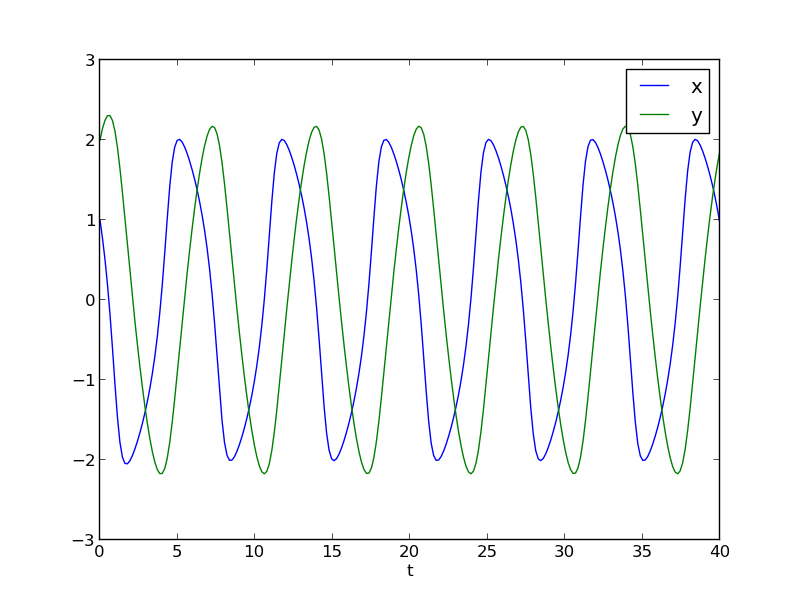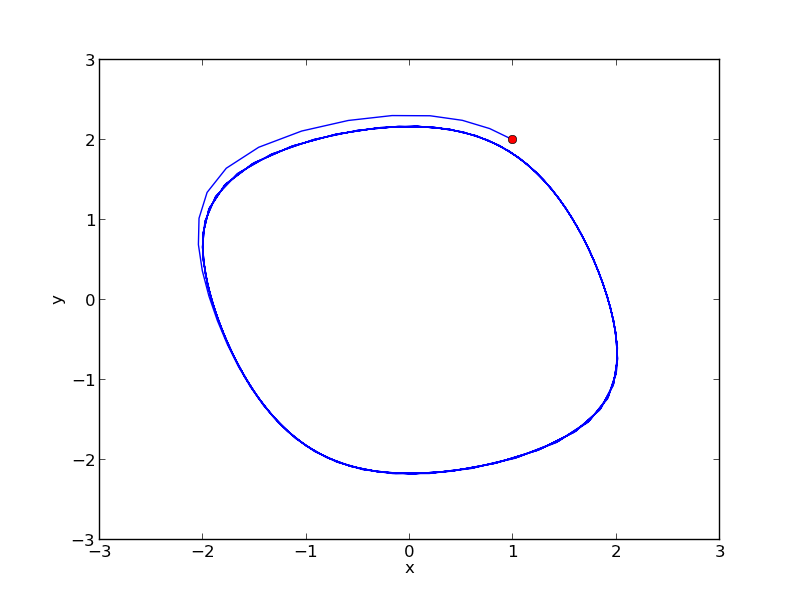Solving a second order ode
Posted February 02, 2013 at 09:00 AM | categories: ode, math | tags:
Updated February 27, 2013 at 02:32 PM
The odesolvers in scipy can only solve first order ODEs, or systems of first order ODES. To solve a second order ODE, we must convert it by changes of variables to a system of first order ODES. We consider the Van der Pol oscillator here:
$$\frac{d^2x}{dt^2} - \mu(1-x^2)\frac{dx}{dt} + x = 0$$
\(\mu\) is a constant. If we let \(y=x - x^3/3\) http://en.wikipedia.org/wiki/Van_der_Pol_oscillator, then we arrive at this set of equations:
$$\frac{dx}{dt} = \mu(x-1/3x^3-y)$$
$$\frac{dy}{dt} = \mu/x$$
here is how we solve this set of equations. Let \(\mu=1\).
from scipy.integrate import odeint import numpy as np mu = 1.0 def vanderpol(X, t): x = X[0] y = X[1] dxdt = mu * (x - 1./3.*x**3 - y) dydt = x / mu return [dxdt, dydt] X0 = [1, 2] t = np.linspace(0, 40, 250) sol = odeint(vanderpol, X0, t) import matplotlib.pyplot as plt x = sol[:, 0] y = sol[:, 1] plt.plot(t,x, t, y) plt.xlabel('t') plt.legend(('x', 'y')) plt.savefig('images/vanderpol-1.png') # phase portrait plt.figure() plt.plot(x,y) plt.plot(x[0], y[0], 'ro') plt.xlabel('x') plt.ylabel('y') plt.savefig('images/vanderpol-2.png')

Here is the phase portrait. You can see that a limit cycle is approached, indicating periodicity in the solution.

Copyright (C) 2013 by John Kitchin. See the License for information about copying.